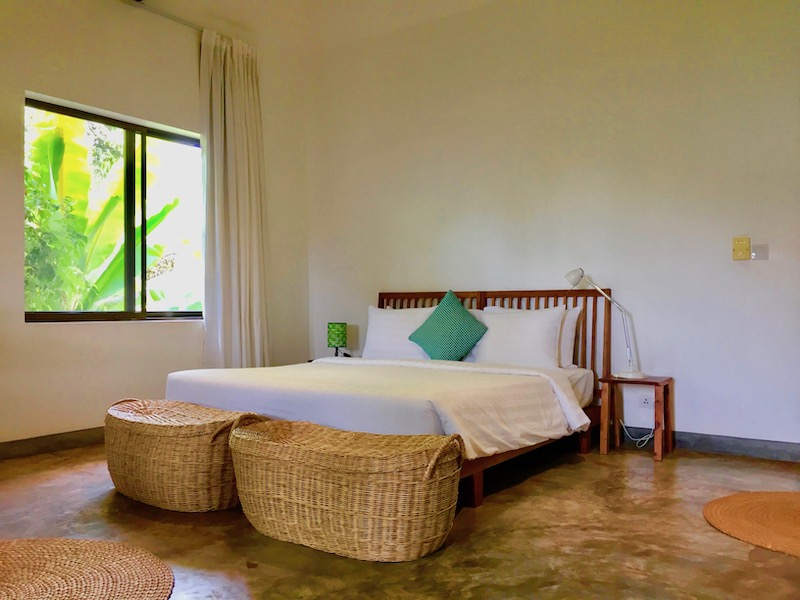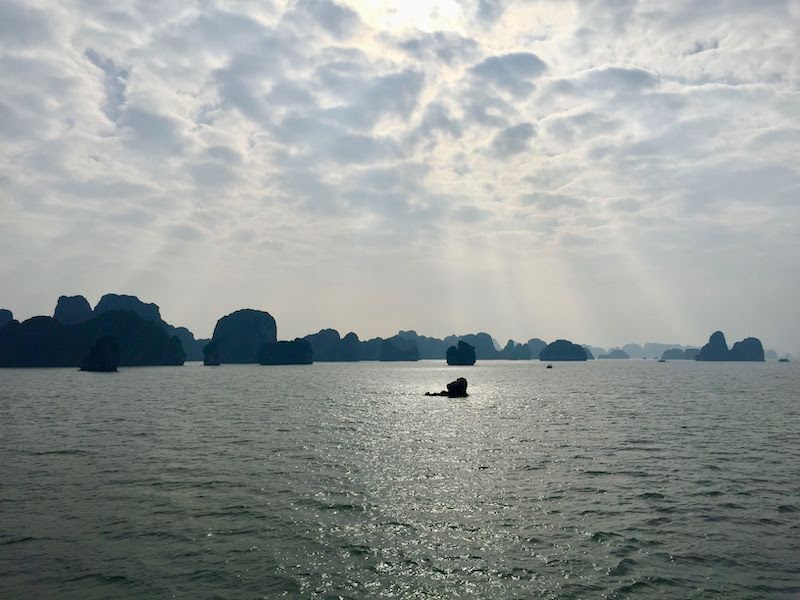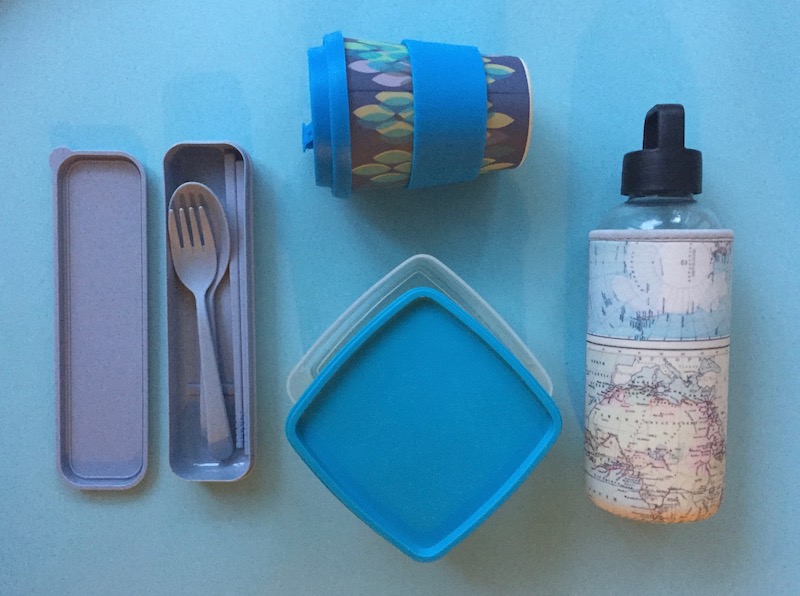Published 24 February 2019 ● Last Updated on 27 June 2022
This article comes from our favourite eco traveler, Akshata Rao who is always ready to make a positive impact in her day today life and is not afraid of going the extra mile to achieve that. Akshata is an engineer by day who currently calls Singapore her sixth home in a decade. Join her on her trysts with Singapore and sustainability on Instagram, and her attempt at conscious travel on her blog. Her earlier articles include Tips| Be a Green trekker. She has also been a content contributor in the articles- VEG in the city| Our top picks in Singapore and Package Free Shopping in Singapore
Many of us love to travel, and we are spoilt for choice in this region of the world where a new culture awaits us just a short flight away. When I began exploring the countries around Singapore, what struck me was the incredible variety of everything from culture to cuisine, and how the locals gladly share it with those of us who visit. It also made me wonder about an important aspect of travel – what is the impact we travellers have on these local ecosystems? Can we make choices which help the locals if we have more information about the consequences of our footsteps? The answer is an emphatic yes. It does take a bit more effort and planning than being a responsible citizen at home; but with the numerous resources available to us today, this is a reality within our reach.
What I hope to present in this article is an index of sorts to travel more sustainably and provide a few personal examples and resources that delve deeper into sustainable travel. Bookmark these to use when you plan your next holiday, and you’ll find yourself travelling with an increased positive impact to the environment, places and people who warmly welcome you into their countries.

MODE OF TRAVEL
Whether it is for work, pleasure or visiting family who live far away, the most common way to leave our little red dot is by flying out. Airline travel is the largest contributor of CO2 emissions per passenger mile compared to other modes of transport. While the UN’s civil aviation body ICAO has approved a scheme CORSIA (Carbon Offsetting and Reduction Scheme for International Aviation) that requires aircraft operators to offset their emissions in a phased manner, it is slow and spread across the next few decades. As users, we can start making choices right now.
Given that our generation is strapped for time, this is the fastest mode available to us. While we may not be able to give up this great human invention on all our travels, there are choices we can make if we have the luxury of time during any of our trips.
Stay tuned to SecondsGuru’s series of articles that explain the deeper concept of carbon footprints and offsetting – here, here and here.
Summarising from the above, a few steps you can take are:
- Fly less: If you have time and your destinations allows for it, take trains, busses and ferries. The carbon emissions of these modes is significantly lower than a plane, in some cases 70-90%. While it is easy to find this information in the west (example, Europe’s Eurostar maintains its details here), data might not be readily available for Asian operators. Trust the extensive research anyway, and make this choice if you have the resources.
- Fly economy: First class flies fewer passengers for the same amount of fuel, thereby creating a carbon footprint almost three times larger than an economy seat. Skip it and fly economy instead.
- Buy carbon offsets (in-house): Many airlines now offer you the option to buy carbon offsets at the time of booking your flight. So what exactly do they do with the proceeds? Airlines invest this capital in research and implementation to (1) reduce carbon emissions, for example tree planting in areas where it creates a measurable impact (2) encourage new sustainable energy projects like alternate sources of fuel which naturally release lesser CO2 than petroleum based fuels.
- Buy carbon offsets (on your own): When you are not able to buy this when you book, search independently for the carbon footprint of your flight and channel your dollars into organizations which work towards reduced emissions and alternate fuels. SecondsGuru’s detailed guide here and here can help you get started on this journey.
ACCOMMODATION
A few of us crave the comforts of home on a holiday, while the rest of us crave novelty. Whichever side you fall on, accommodation options these days are plenty. If you’d like to pick a sustainable option here, it helps to expand its meaning to include economic sustainability as well. Hotels, B&Bs and other options employ locals and have a direct impact on their lives, and we can vote with our dollars for fair treatment of the local community.
Starting with environmental impact, it is near impossible to measure the carbon impact of a specific place to stay. Instead, focus on what can be observed and measured. The most obvious is eliminating single-use plastic in the rooms, like providing glass water bottles and pump-bottles for toiletries. If you take your own water bottle, filling it up should be easy and accessible. If the place has a restaurant, there should be no/minimal use of disposables. Going one step deeper will involve finding out their waste management and disposal methods. If they don’t have information about their waste treatment, recycling and composting on their website, it is perfectly ok to send them a quick email to find out.
When it comes to economic impact, the details are not always in print. Fair wages and fair benefits to the local staff might not be things that big hotels readily share on their website. If this matters to you, reach out to local BnBs and home-stays where it is easier to receive answers to these questions, and where fair treatment of their employees is easily visible and measured.
Social enterprises: Grassroots Volunteering accommodation options are here, pick a location to continue. Also look for home-stays at your destination. Although you might rough it out a bit more than a regular hotel or B&B, the insight and experience you gain will be invaluable.

And here is a picture of a homestay where Ananya Saluja, who at 17 years has been our youngest author so far. She wrote a beautiful piece about her trip to Ladakh as a volun’tourist’ four times over. On one of her trips, she stayed with a Ladakhi family who graciously hosted her at their cosy home. Here is the link to her article on Secondsguru where she points out that Everyday in Ladakh is Earth Day!

FOOD AND DRINK
Although our little red dot has plenty of options to taste foreign cuisine right here in town, I have to admit there is a certain joy in eating great food in the country of its origin. The ambiance, the struggle with the language to get exactly what you want (or something entirely new!) and the final dish made by a local who has been making it almost forever is quite a joy.
The greatest impact here is if the ingredients are sourced from local farmers in a farm-to-fork experience where fresh local produce is used to whisk up a meal. Everyone benefits here – the farmers are fairly paid for this produce directly by the restaurant, and you get to savour local flavors which are nutrient rich with minimal processing. Who knows, you might just discover your next favorite vegetable here! This movement has also grown to include coffee, wine, chocolates and a gamut of other edibles. I say the more the merrier, now you can bring a taste of your holiday back home too!
If you’re a vegetarian/vegan, you have both a challenge and an opportunity. You might not be able to walk into any local eatery, so it entails an extra step of research. Use HappyCow and Singapore’s very own A Billion Veg to find vegetarian options closest to you. For a world-wide index, check the comprehensive list maintained by Lola Mendez here. Also try the app V-Card to help you communicate your preferences. The opportunity? Well, introduce exciting vegetarian flavours to your travel companions!
Social enterprises: Grassroots Volunteering has listings for restaurants and fair trade coffee (amongst many other gustatory delights) here. Many restaurants now train local youth from the hinterlands in the hospitality industry, given that this is a major slice of the economic pie in many SE Asian countries. This gives them an opportunity to earn a fair wage and a way forward to sustain their families. The coolest part is that there is so much energy and enthusiasm to learn at such restaurants; I felt 25 again as I tucked into a meal at Know One Teach One (KOTO) in Hanoi.

A destination’s big sights are usually why we travel afar and close on its heels are the many activities we can do there. You might be in Thailand for Bangkok’s wonderful temples or for its fun beach sports. Or in Japan for the poignant sights in Hiroshima or the thrill of climbing Mt.Fuji. This is exactly where we need to pause and consider the impact of these activities on a local ecosystem. Fragile natural wonders are bearing the brunt of over-tourism, and while I would definitely not advise to take them off your wish-list (they are raved about for a reason), it warrants a closer look at the options available to minimize our impact.
Once you decide to take a tour of a destination’s sights or pick an activity to enjoy with friends and family, search for two things: (1) are these areas under the threat of over-tourism (2) are there any tour operators who mitigate this risk and what are their practices? Here’s a situation I faced last year. I skipped Maya Bay when I was in Thailand, simply because at that time I couldn’t find an operator who could offset in any way the damage being done there (and Maya Bay was shut soon after for recovery). However, later in the year when I headed to Vietnam, I found Indochina Junk (find their responsible tourism practices here) to enjoy Halong Bay with. Such operators do exist and although they are a little more expensive than the average tour, the sustainable impact you get for each dollar you spend is way above average.
Social enterprises: Grassroots Volunteering entire database is here, choose your activity on the sidebar. For out-in-nature experiences, find operators like Indochina Junk and Next Step Thailand once their policies resonate with you. There are also free tours like Hanoi Kids where local students learn from you (in this case, English), and you get a free tour of the location and a local experience like no other! Another business idea which has developed are marketplaces which connect you directly to locals who can provide experiences in and around your destination. Check sites like Backstreet Academy, LocalAlike and WithLocals to find a variety of activities like cooking classes, art and pottery instruction, food tours, overnight stays in the countryside, beach activities and many more. If you end up spending a day with an artisan or take a cooking class, write back to us and tell us how it was!

If you like reading blogs, there are many conscious travelers who are doing the grunt work of vetting sustainable enterprises for you and sharing it out of their large green hearts. Here are a few I turn to for inspiration and information, use them to start your exploration: Lola Mendez (Miss Filatelista), Evelina (Earth Wanderess), Emma and Anthony’s family travel blog (Small Footprints Big Adventures), Abbie Synan (Speck On The Globe).
FOR A READY ITINERARY
If you prefer to have a travel agent stitch together an itinerary for you keeping these conscious vectors in mind, take a look at ones like Responsible Travel. They connect you with local holiday companies and/or local experts who will then help tailor an itinerary for you based on your specific interests.
AND FINALLY, BYO ON THE ROAD!
Apart from the above vectors, there is always the call to BYO even when you are travelling. It does take extra effort to remember to pack these with you from home and then the courage to ask to use them in a new language. But its impact multiplies the more number of times you do it and also if you are generous enough to do it for your travel companions!


Armed with this information, I have only one other piece of advice to throw into this ring where we’re fighting for a fairer, greener planet. If you’re in any doubt about information when you are planning your travel, do not hesitate to ask the hotel/restaurant/tour providers. With the minute it takes to send an polite email, you will potentially reduce your negative impact many times over. Enjoy your travels, and colour the world a little more green each time!
All links in this article are either the author’s personal experience or found by extensive online research. This article does not contain any marketing or affiliate links. Both the author and Secondsguru have no relation to any resources mentioned (either personal or professional), and are not responsible for any change in practices of the listed resources. Please contact the resources directly for more information on their offerings.



0 Comments